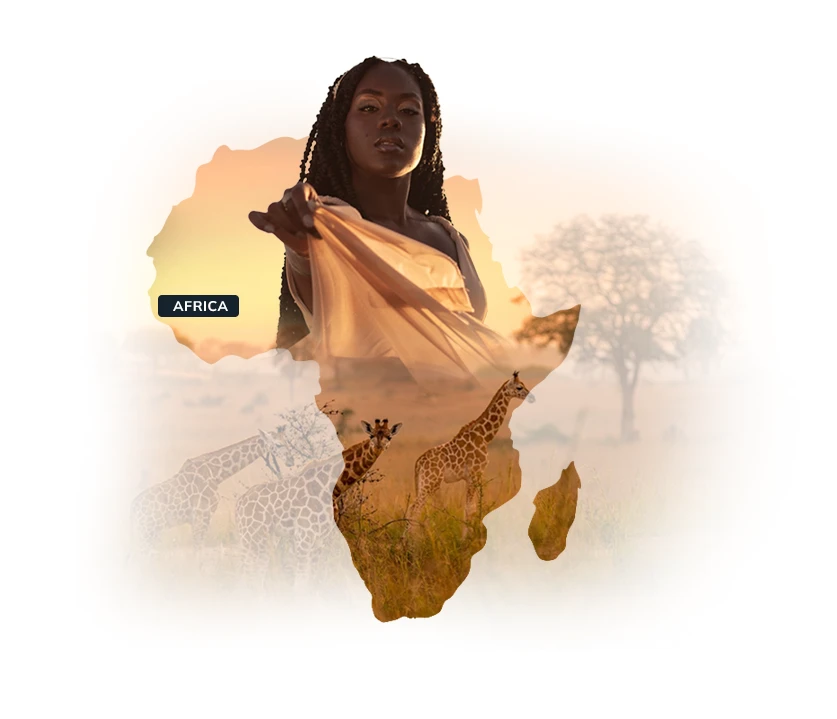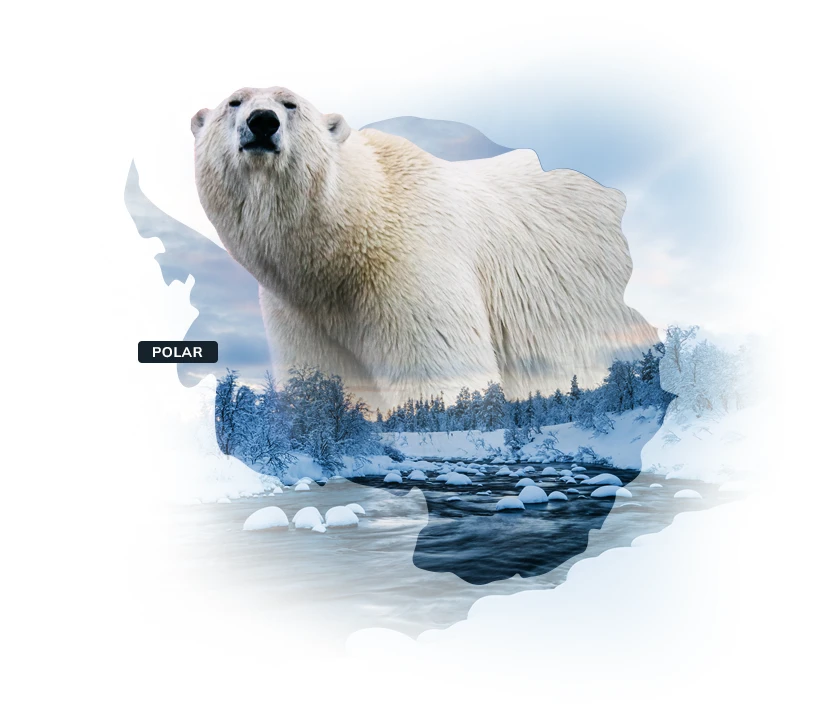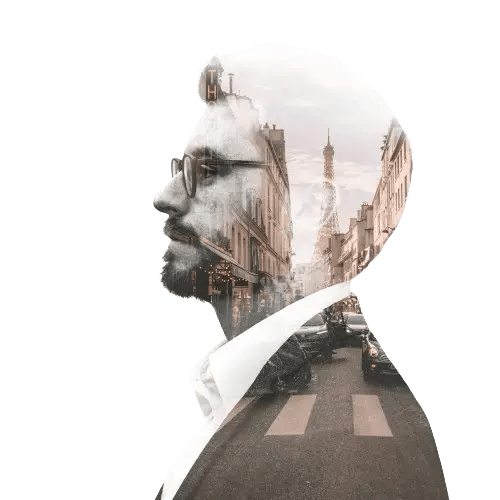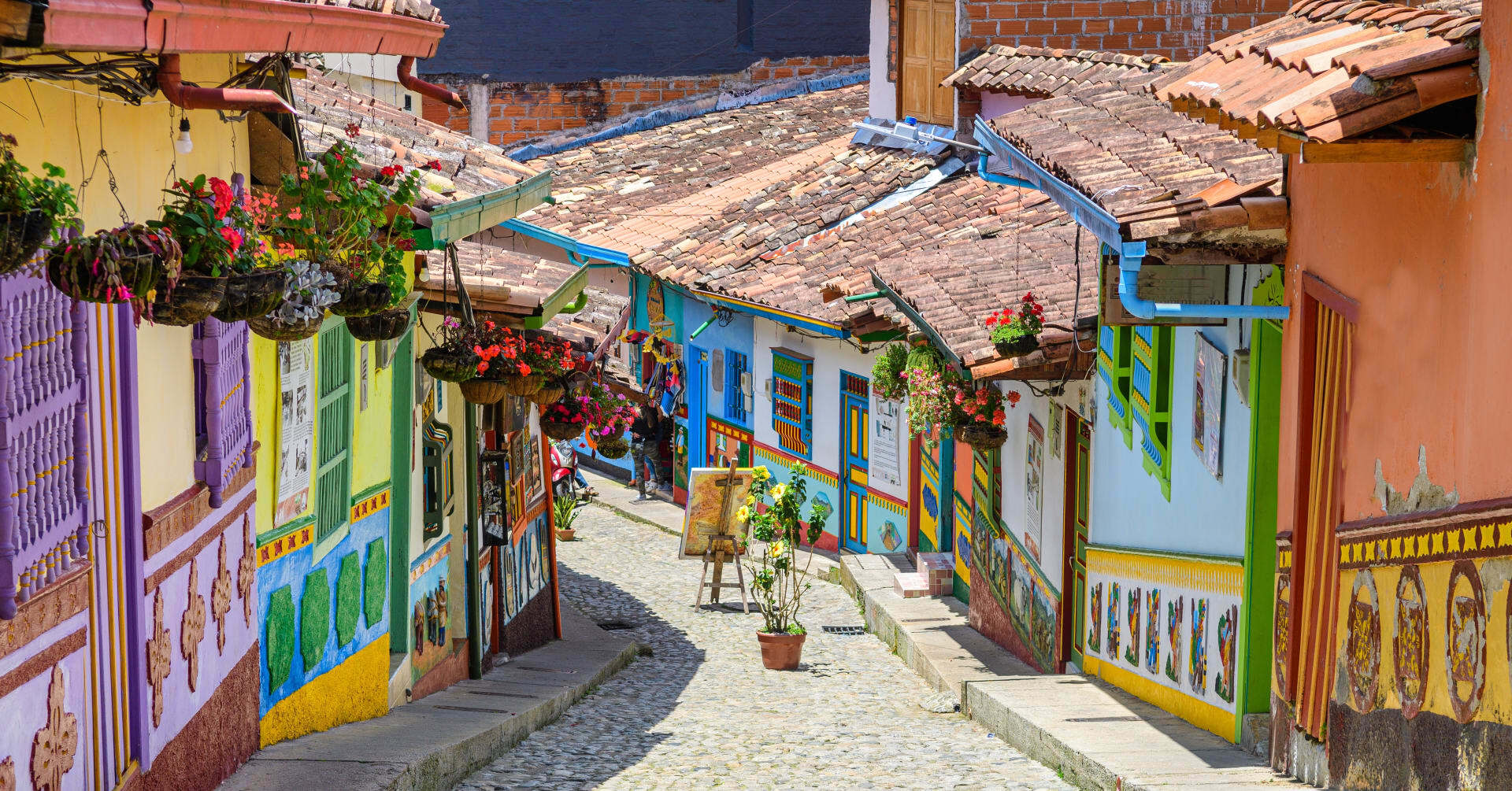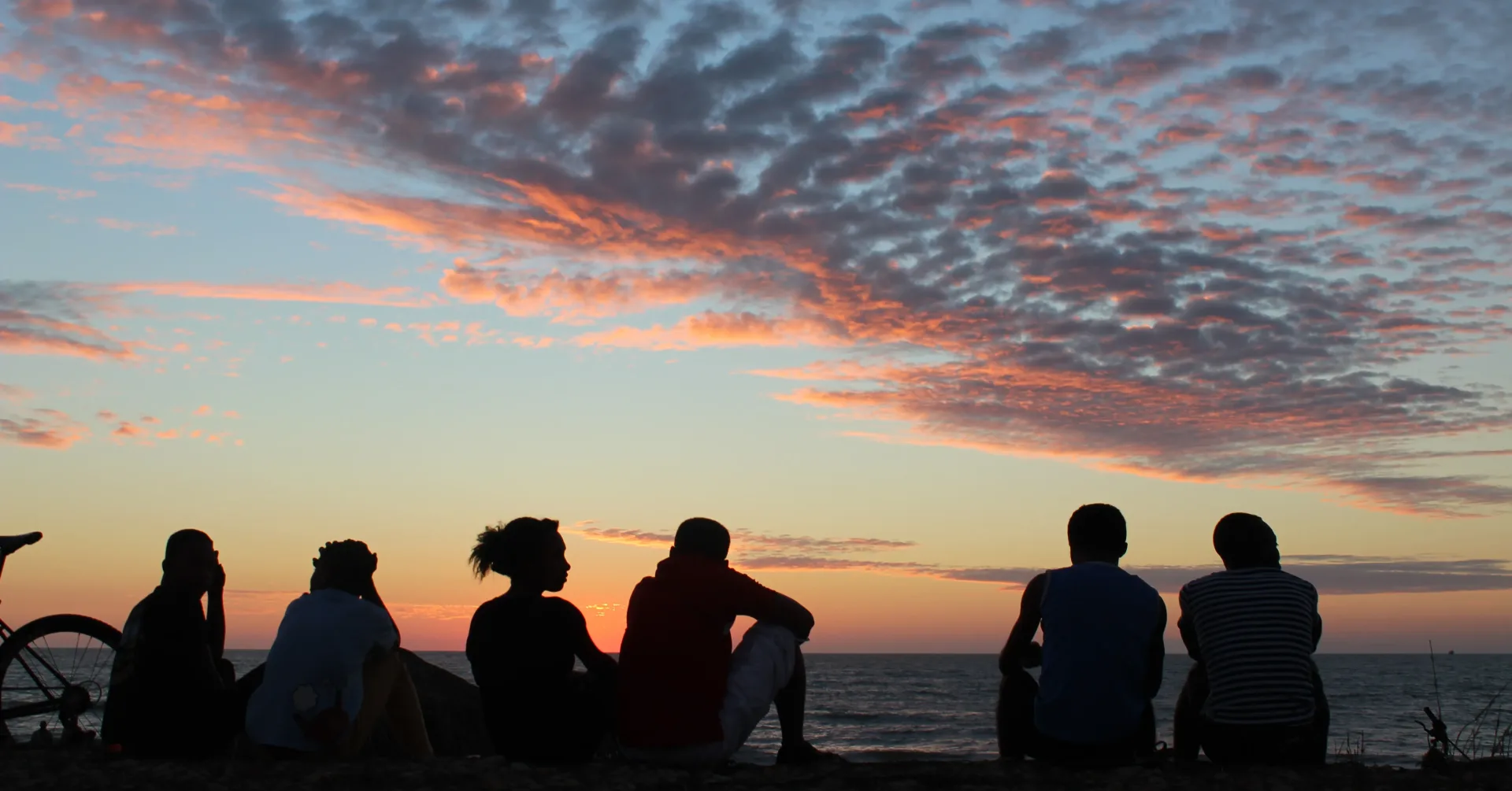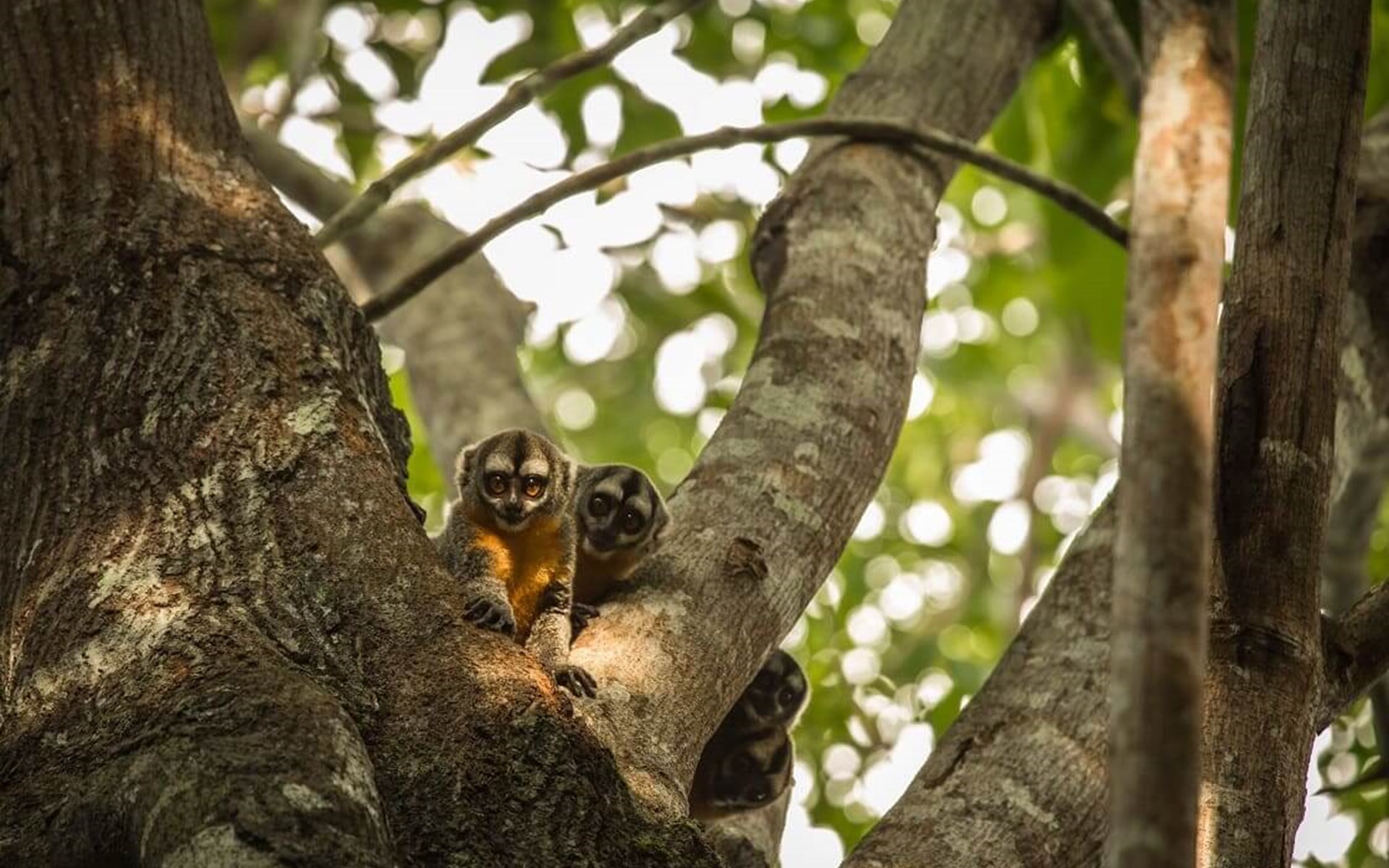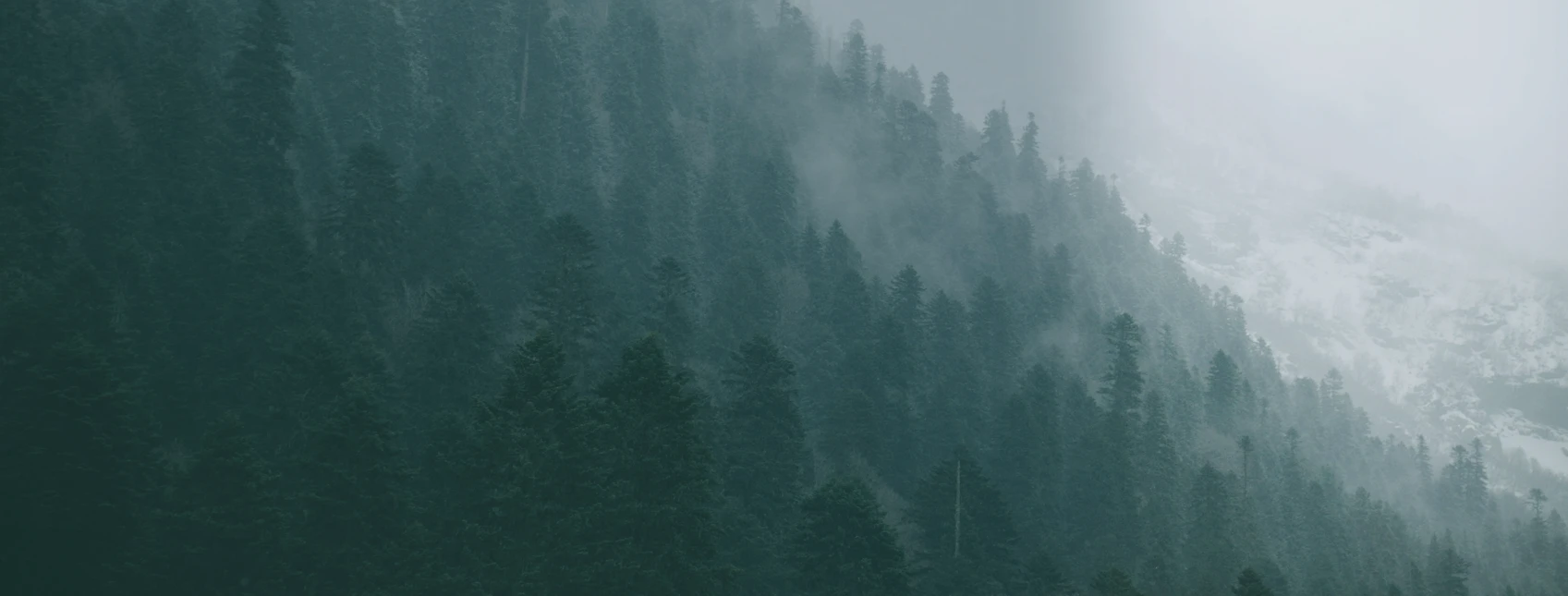Join me as I reflect on my 10-day journey where we delved deep into the Andes beyond Machu Picchu, Peru.
We uncovered the Sacred Valley in a new light. Alongside a team of local specialists, I was introduced to a depth of culture that reaches beyond Machu Picchu. Introducing ancient traditions that pre-date the Incas, as well as those that have long outlived the Spanish colonial force.
 Image: Sun-Gate, Machu Picchu
Image: Sun-Gate, Machu Picchu
In July, 1911 Hiram Bingham and his team were led through dense tropical thickets, up soaring slopes, following pathways chiselled into the dramatic landscape. A young boy from a farming community showed the explorers what the forests concealed - a citadel which is now known as Machu Picchu.
Today, the crown jewel of Peru and a must-see site for all visitors, Machu Picchu serves as an icon of Peru’s ancient empires and civilisations. The citadel draws troops of trekkers through its sun-gate (Inki Punku) and day-trippers from the heights of the valley by bus and scenic train. It is a must-see, and a wonder of the world - and the beauty of the setting can’t be understated.
But sometimes our vision of Peru is limited. The Incas were just a small part of a vast and diverse history, and so much is still being discovered today. The scope of the ancestral vision ranges far further than Machu Picchu’s adobe walls and whilst some aspects still remain a mystery, many practices and traditions are still maintained by rural communities today.
 Image: Huaca Hullamarca, Lima
Image: Huaca Hullamarca, Lima
Days 1 - 2: Lima
Landing in mist-clad Lima, I was taken aback by the striking desert landscape. Driving through the city, various archeological remains are integrated into the modern landscape. On the way to our suburban hotel, we passed the adobe pyramid walls of Huaca Huallamarca. The olive-grove green spaces of San Isidro are neighboured by a vast complex dating back to the Lima Culture who occupied this area from 200 BC to 700 AD.
 Image: Museo Larco, Lima
Image: Museo Larco, Lima
The best way to orientate the mind, and engage with a history reaching back over 5,000 years is by an introductory visit to the Museo Larco. Not only is this one of the most complete museums in Latin America, but it is also incredibly beautiful and worth a stop for a lunch of ceviche washed down with a Pisco sour. We had an in-depth account of the pre-Inca cultures of the Mochi, Wari, and Chimu peoples (to name a few) and we were introduced to the important iconography and practices that remain important today.
Image: Huari Funery Bundle, The Larco Museum
‘This series invites us to reflect and build a narrative that allows us to approach the way in which the ancient Peruvians understood their environment, organised their world and achieved the greatness that we are so proud of.’ - Andres Alvarez Calderon, Executive President of the Larco Museum.
The Larco Museum is unmissable for those who want to understand and connect with the cradle of some of the most important civilisations in the world. Fascinating artefacts with expert knowledge are vessels into a deep and compelling history. Without this basis, we wouldn’t have fully understood what came next.
 Image: Casa de Aliaga, Centro Historico, Lima
Image: Casa de Aliaga, Centro Historico, Lima
Moving into Lima’s Historic Centre, our host Maru took us to her family home - Casa de Aliaga. So subtle was our visit, we couldn’t have foreseen just how impressive this colonial mansion was going to be. An inner-city oasis with contemporary touches from the Renaissance to the Baroque to the Neo-Classical. The central courtyard with a flourishing ficus tree marks the space where Fransisco Pizarro gifted his confidant, Jeronimo de Agalia following the founding of ‘Lima’ in 1535.
 Image: Hotel B, Barranco, Lima
Image: Hotel B, Barranco, Lima
From past to present, we drove along the coastline, towards El Malecon and into Barranco. This district is punctuated with murals, hipster cafes and trendy bars. An emblem of modern-day Lima where fusions of cultures meet. Walking around the artistic neighbourhood, is a feast for the eyes, and to fill our souls further we tried out a range of locally produced farm-to-bar chocolates in combo with cold-brew nitro coffee with kombucha at El Cacoatal followed by dinner and a nightcap at Hotel B.
 Image: Piruay Lagoon, The Sacred Valley
Image: Piruay Lagoon, The Sacred Valley
Days 3 - 5: Ollantaytambo & The Sacred Valley
After spending only one day in Lima, we jetted off over the Andes and into Cusco on an early morning flight. The journey took no time at all, and sitting on the left-hand side of the plane exposed fantastic views of Salkantay and Ausangate which we soon learnt are some of the most important glaciers in the Andean Cosmovision. A bumpy landing into the high-altitude city with undulating curves and shadows of the mountain range surrounding, in a palette of golden, brown and green.
Across and straight out of the city, we drove towards the Urubamba River with a pit-stop at Piruay Lagoon on the way. The air feels thinner, fresher and brighter up in the mountains and after a Coca tea and the most delicious passion fruit I’ve ever tasted (fruits are much sweeter in the Andes), we took to the waters on a paddleboard. Our guide told us the local myths and legends of brother and sister lakes, Huaypo and Piruay which recount stories of kinship and defiance. As we gently paddled, we spotted highland birds hiding in the reeds' fringes.
 Image: Ollantaytambo, The Sacred Valley
Image: Ollantaytambo, The Sacred Valley
An hour’s car-journey further into the Sacred Valley took us to Ollantaytambo. A deeply historic town which dates back to the rule of the Inca Pachacute (1418 - 1471), this is one of the oldest settlements in the Americas. There is evidence that the origin of Ollantaytambo actually pre-dates the Incas by at least 400 years and vessels of the Huari civilisation (AD 600 - 100) pepper the landscape - best exemplified in the ruins of Pumamarca.
Walking through the cobblestone streets with the sound of gushing water from original water-channels winding through felt otherworldly - a step back in time. Looking upwards, Ollantaytambo’s main temple complex is built on a steep hill with impressive retention walls giving it the impression of a fortified city. An observer of the passage of time and a tool used to measure the seasons, even military bases of the ancestral civilisations were entirely in-tune with the environment. It was here that the Incas won their most important victory over the Conquistadors.
Today, a multi-cultural scene is present in Ollantaytambo, and visitors from other countries - Europe and the Americas - have passed through this place of awesome beauty and now call it home. I can entirely understand why people want to stay.
 Image: Las Qolqas, Ollantaytambo
Image: Las Qolqas, Ollantaytambo
‘The indigenous populations of the nearby villages of Huilloq and Patacancha have staunchly kept their traditions alive, offering visitors a window into these native communities.’ - Herman van den Wall Bake (Owner, Las Qolqas)
We set up camp at Las Qolqas, a place of astonishing beauty. With the powerful sound of water running and beautiful gardens in bloom with frequent humming-bird guests, this is a setting giving the Garden of Eden a run for its money. Las Qolqas is the lowest impact lodge in Peru. A small collection of safari-style tents are located at the foot of the soaring Andean landscape. Purposefully designed so that the owners could dismantle it in under 2 weeks, with no sign of it ever being there, it feels as though there is nothing between the lodge’s guests and the nature surrounding. On our first night we were blessed with a violet sunset like no other.
Connected with the landscape, we also connected with the local communities. Walking with a member of a local Andean community who owned the land, we also joined the owner of El Albergue, Joaquin on a walk through the forested highlands. Valle Sagrado Verde is an initiative set up to reforest the slopes of the Vilcanota River with only native species of the Sacred Valley. Today we planted Huaranhuay, Chachacomo, Molle and Tare trees and contributed towards the 22,155 trees planted by Joaquin and his team. The verdant valley teeming with life and bromeliads was an inspiring place to spend the day but it also reminded us of human’s effect on the planet.
 Image: At the Moray Terraces, Misminay
Image: At the Moray Terraces, Misminay
The Moray Terraces and Maras Salt Mines are prime archaeological and agricultural attractions in the Sacred Valley. Driving past the bus-loads of people waiting to see the Moray Terraces, our guide Katarina took us straight on upwards towards a village atop the hill. It is here that our gorgeous host Nelly introduced us to her family and community - the Misminay Community.
120 families make up the Misminay Community and have cherished their ancestral traditions which are sacredly linked with nature and the broader cosmovision. The weaver women offered us a unique demonstration of their traditions and we got involved in the process from washing the wool to dying it with colours created by entirely natural produce.
Slowly trekking, we spoke with the families as we walked to their spectacular viewpoint of the Moray Terraces. It is here that we participated in a ritual and a ceremony offering to Pachamama and shared a drink of fermented corn known locally as Chicha. Working up an appetite, we returned to one of our hosts’ homes for a delicious lunch together of local soup with vegetables and potatoes, fresh corn, grilled chicken and uchucuta (the best hot sauce which we saw being made on the bata’n, an ancient Andean grinder). Our bellies full and hearts warm, we returned back to Las Qolqas with a new perspective on living that I found particularly inspiring.
 Image: Machu Picchu
Image: Machu Picchu
The train-ride to Machu Picchu took us from arid golden landscapes, along the river and down into the jungle. The landscape changes drastically in such quick succession here. Through the ramshackle backpacker town of Aguas Calientes and onto the bus, up dozens of cross-backs to the high peaks of the mountains above. We debunked some of the historic myths regarding the mighty citadel, and engaged with much of our knowledge about Andean spirituality at this impressive archeological site. The beauty of Machu Picchu can’t be understated.
DISCOVERTHE SACRED VALLEY
Days 6 - 7: Cusco City
Our sleepy train from Aguas Calientes took us up into Cusco for rest. The whitewash and powder-blue of the city was soothing, and we explored the neighbourhood of San Blas. A historic but modern part of the city, this place synergised the ‘old’ and ‘new’. San Blas was a significant neighbourhood during Inca times, and even existed before then. It was also where Spanish parishes were established during the Colonial period, and the in neighbourhood today remains the beautiful architecture of both.
 Image: Original Inca foundations in San Blas, Cusco
Image: Original Inca foundations in San Blas, Cusco
San Blas has undergone some changes in the last 30 years, and the vecinos (the local residents) alongside the Neighbourhood Association and smaller Artist and Artisan Associations have worked towards creating a space that’s attractive, green and expressive. The small cobblestone streets leading up the hill towards Sacsayhuaman are dotted with colourful plant-pots and creative murals of nature and life. We walked down into the Plaza de Armas from here and spoke with some local artists on the way.
Cusco was the most important city to the Incas, and today it is the oldest living city in the Americas with its history dating back 3,000 years. Each aspect of the city of Cusco is entrenched in history, and with the remnants of over 8 cultures, walking around the city exposes the deep and at times difficult history that its residents endured. It’s so important that UNESCO granted it the title of, ‘Cultural Heritage of the Humanity.’
.webp?width=1024&height=768&name=marupainting%20(1).webp) Image: Maru painting her Bull, Florencia y Fortunata with Totemiq,Cusco
Image: Maru painting her Bull, Florencia y Fortunata with Totemiq,Cusco
In the afternoon, we had a Cusequenian gilding workshop to attend. The workshop took place in the residential outskirts of the city, and our hosts introduced us to Totemiq which works in collaboration withFlorencia y Fortunata. We received a Torito de Pucara ceramic (a symbol of prosperity) with supplies inside an MDF box to get started in decorating our bulls. We learnt about the syncretism of Andean culture with Spanish influences, and we also heard about initiatives to support local women artists which we’d be contributing towards by participating in the workshop. We drank locally brewed coffee and honestly, this was the most relaxing activity - a haven in the city for those who want to relax after adventures in the Andes.
 Image: Belmond Monasterio, Cusco
Image: Belmond Monasterio, Cusco
We checked-in for a night at Belmond’s Monasterio through the chapel of San Antonio Abad, and what an entrance. The baroque architecture, towering ceilings and walls dressed in opulent gold. It felt like we had entered a different era, and as we walked through the arches into the central courtyard the full moon shone brightly above. The 16th century monastery was built on the foundations of Amaru Qhala’s Inca palace. Following a cozy tapas dinner at Cicciolina, we walked back up the street for rest in our heritage rooms with the peaceful sound of the fountains just beyond our shutters.
Days 8 - 10: Ausangate with Andean Lodges
Leaving city life behind, we travelled up into greater altitudes. Following the mighty peak of Ausangate on the horizon, we drove for three hours past picturesque Andean villages to begin our two-night trek. The Apu Ausangate Trail is one of the highest-altitude walking routes in the Andes. Our guide, Jesus, told us Andean Lodges’ incredible story, and gave us useful tips for preparing and coping with the altitude, as we were due to ascend to over 5,000 metres above sea level at the Palomani High Pass.
Andean Lodges was founded in 2006 in association with the people of the communities of Chillca and Osefina. In the region of Ausangate Mountain, original cultures have conserved their ancestral culture and deep spiritual connection with the land. There are only 3 societies in the world where animal herding is the fundamental livelihood activity through which resources are obtained. We were to meet with some of the last remaining llameros in the world, and these were who we were going to be walking with.
 Image: People of Chillca Community, Ausangate
Image: People of Chillca Community, Ausangate
In a tent at the base of the Pitumarca Valley, we ate a semi-alfresco lunch, filled our water bottles and set off towards the impressive Japura Gorge. A landscape in hues of burnt orange and moss green, with unique tiny flowers stitched into the ground underfoot, we followed no footpath or signs, just the leadership of our guide. Walking slowly and taking our time to acclimatise, the landscape drastically changed in fast succession.
From vast chasms leading to gushing rivers, out onto lush altiplano dotted with thousands of grazing llamas and alpacas, and horses. The valley opened out before our eyes, and we were faced with Ausangate before us - Peru’s fifth highest peak, and arguably the most beautiful in all the southern Andes. Ausangate is a principle Apu - meaning deity or god. It is viewed as the bearer of life and guardian of one of the most impressive mountain ecosystems in the world.
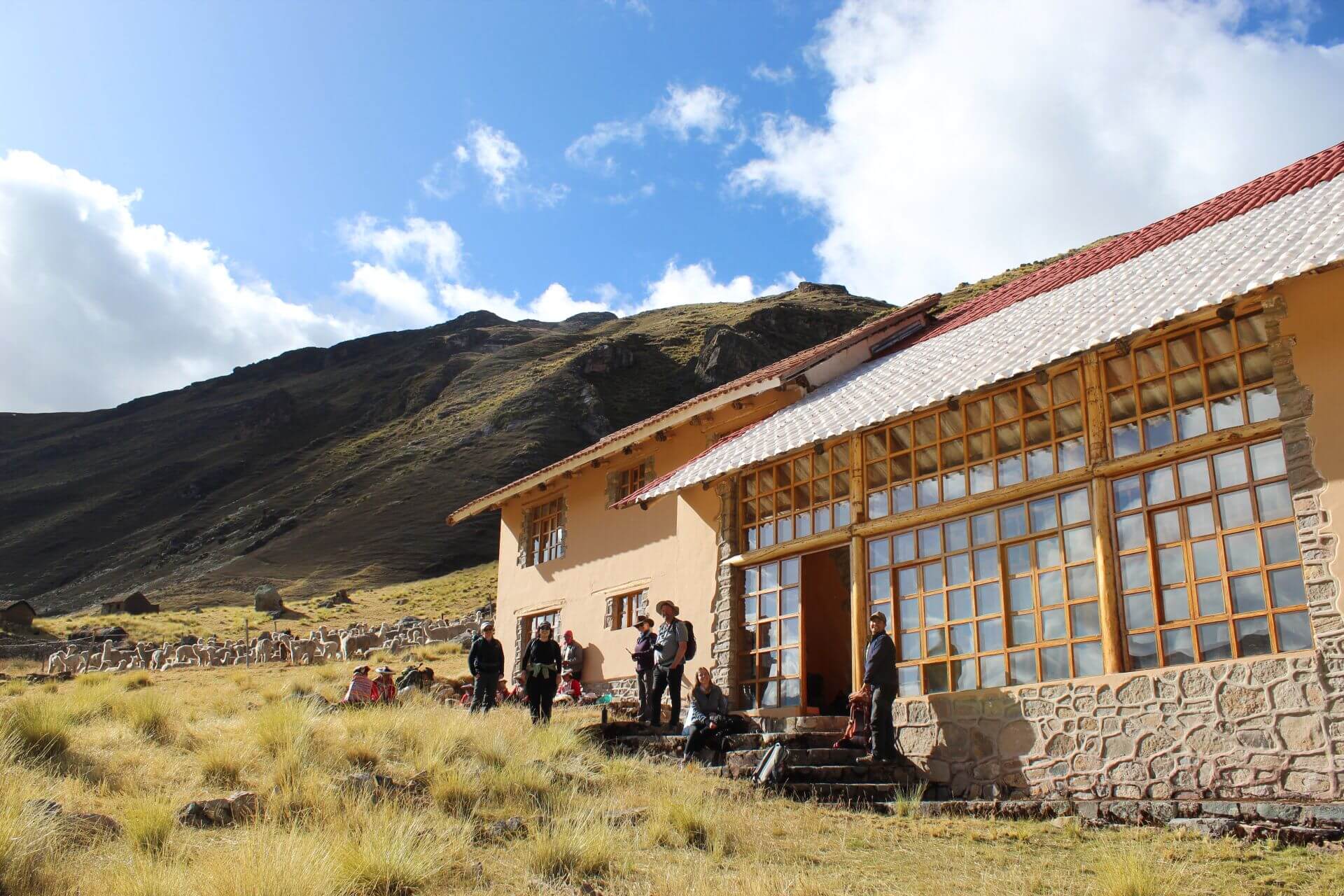
Image: Us outside Chillca Tambo,Ausangate
Upon arriving at our first lodge, Chillca Tambo, we met the local community and were greeted with a warm welcome. The Andean Lodges or Tambos are ecologically designed, and as we noticed, strategically placed for spectacular views. The lodge was low-impact against its setting and the huge double hung window overlooking the expansive valley and village neighbouring was utterly gorgeous. Rooms were basic and homely, and the community provided us with a delicious four-course meal for supper.
Without electricity, phone signal, or WiFi, we were the definition of ‘off-grid’. There was a two-hour period where you could jump in a hot shower, get dried and into PJ’s before getting cozy by the roaring fire. Evenings were spent by candle-light, and circled around the warming hearth. We shared stories of home, and felt delirious and giddy in the heights of the mountains. With a dull headache from the day’s excitements and excursions, I jumped into a bed well equipped with heavy blankets and a hot water bottle.
Awoken by beautiful songs in the morning from our local housemates, and we were straight up and out following our leisurely breakfast. I watched the llamas get buckled up with our bags, and they mystically disappeared before meeting us at the next lodge.
 Image: Llamas at Machuraccay, Ausangate
Image: Llamas at Machuraccay, Ausangate
Machuraccay Tambo is the highest tourist lodge in the world.Although the walks were relatively light, the ascend was tricky and a little breathless at times. Perhaps it was the outstanding views that had this effect… or more likely the altitudes? We walked with our guides, each other and a couple of horses and our group’s morale was strong as we were blessed with blue skies and beautiful sunshine. Walking through Andean montane grasslands, the landscape was incredibly open and bright in the Upis Valley. Gradually the wide valley narrowed down to a slim pass, and from Santa Catalina Mountain above, a waterfall trickled down a scarlett rock-face.
We nestled in for lunch sheltered from the heat of the midday sun. The home of a local shepherd was the perfect setting for a hearty meal, overlooking the valley that we’d just ascended. Gearing up to go again, we set off on the trail and reached the glacial Paloma Lake. We crossed a series of glacial moraines and hiked along a second lake, before finally reaching Machuraccay Tambo.
 Image: Marcos Rojo, Chillca's Manager
Image: Marcos Rojo, Chillca's Manager
A lodge with a world-class view of Apu Ausangate, this was where we felt truly away from it all. We heard fables of the area and felt cut off from the rest of the world up here. We felt fortunate to have a warm base, and great company.Once dark, most evenings we got into bed before 9pm, which is such a rarity for me. It’s a place where time is dependent on your surroundings, and we often forgot the hour of the day. The early nights were much-needed, as the following day we’d be ascending up to the Palomani Pass at 5,100 metres above sea-level.
 Image: Pachamama Ceremony, Ausangate
Image: Pachamama Ceremony, Ausangate
First thing in the morning, we participated in a ceremony to Apu Ausangate equipped with chicha and coca leaves to request permission to pass through the mighty mountain. After throwing wine over the llamas - a funny experience - and a somewhat emotional offering with coca leaves, we set off on our most challenging but rewarding hike. Up and over the high pass, and down a vibrant rubble valley we walked with our herd of llamas in tow and with views of Vinicunca (Rainbow Mountain) in the distance.
On the descend, we stopped at Ausangate Cocha Lake. The landscape changed every minute, and at this point it was a symphony of colours - the glowing white peak of Ausangate, iridescent turquoise of the lake, verdant green grass, and burning orange of the rocks surrounding. It felt like a dreamland. We rested and snacked, and set off again. At this point the trek became a light walk downhill, following gushing rivers heading in the same direction as us. We collected multi-coloured stones and spoke about how strange a thought returning home was. We met our local guides at the foot of the valley, back in one of their houses for our last meal.
An emotional departure, it was really strange to leave the community which we had been walking with for 3 days behind. I think for all of us, it had opened our eyes to an entirely different way of living, in one of the world’s most challenging landscapes. These people had a deep respect for their surroundings, and they are entirely connected to every element of the valley. Out of all our experiences in the Andes, this was the most fulfilling journey. Perhaps it’s something to do with the element of physical challenge, joined with a deep cultural exchange with people we would never have met otherwise. It was so inspiring, and enlightening for us.
 Image: Llameros, Ausangate
Image: Llameros, Ausangate
Ready to journey to Peru? Let us take you there!
Explore itineraries such as Wonders of Peru for more inspiring journeys that follow in this responsible and hugely rewarding manner. Contact our team of Luxury Travel Specialists to find out more and to tailor-make your next big adventure to Peru!


